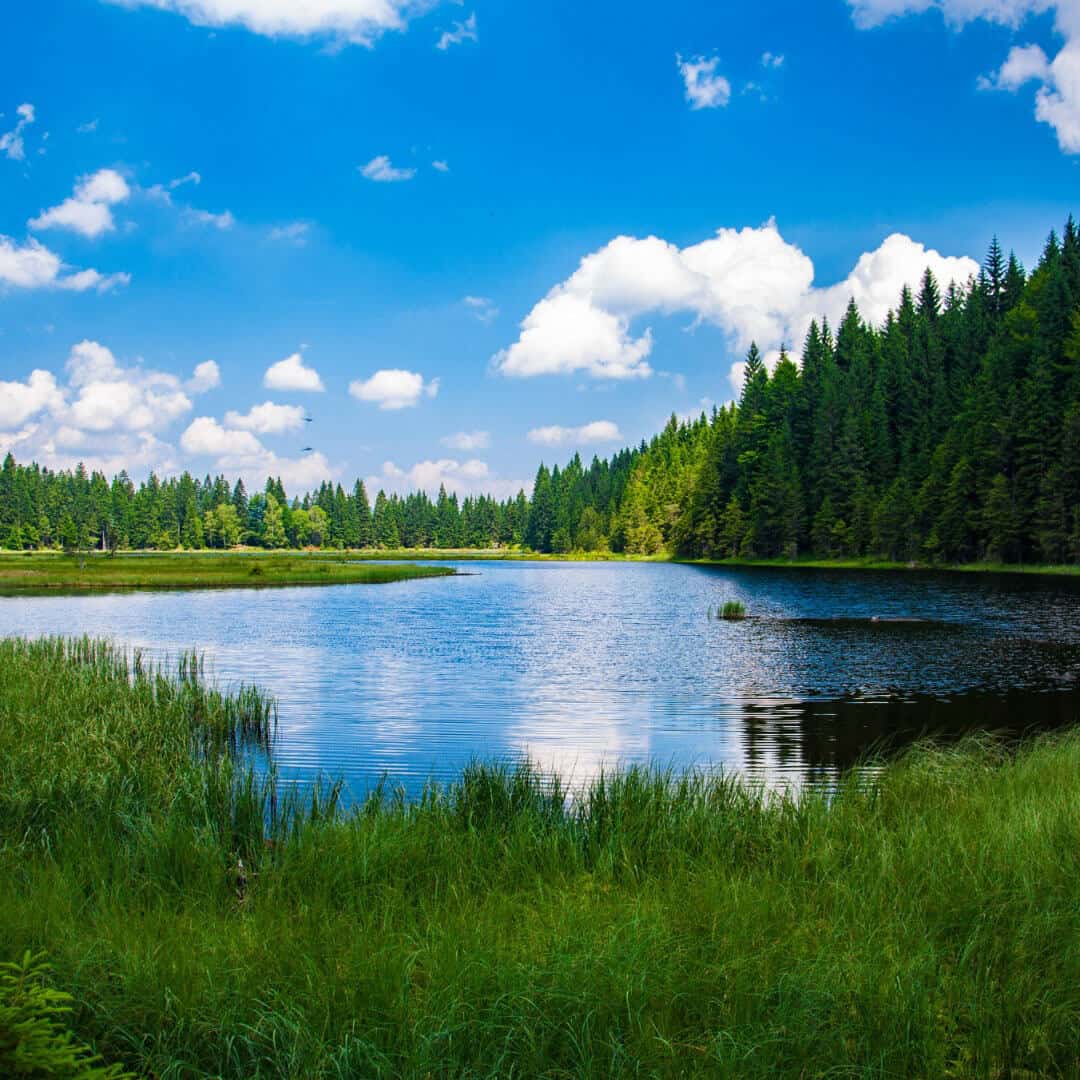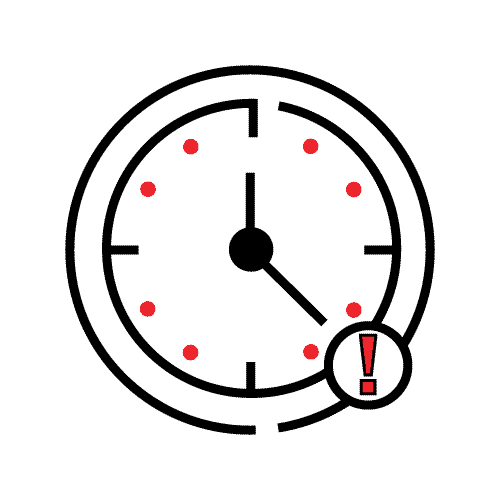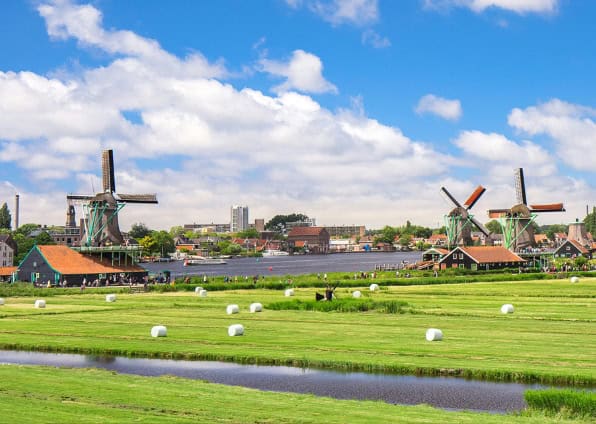
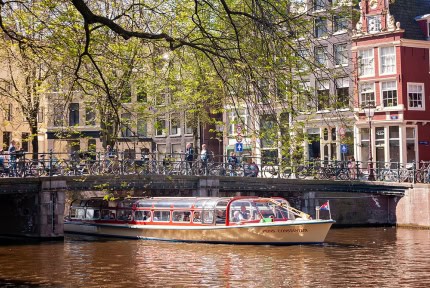
Netherlands Travel Guide
It’s hard to describe the Netherlands in just a few words. Dreamlike canals, stunning tulip fields, a hub of history, art, and culture—there’s no end to the beauty and curiosities the Dutch have to offer.
That said, the Netherlands’ plentiful attractions can overwhelm even seasoned travellers.
To help you out, we’ve put together a quick guide on what to expect, do, see, and how to stay safe with travel insurance while touring the Netherlands.
Best ways to experience the Netherlands
The Netherlands—informally known as Holland—is one of Europe’s most desirable travel destinations, enticing millions of visitors annually.
You might come to indulge in the picturesque scenes along the waterfront. At the same time, other travellers delve into the artistic origins of Rembrandt and Van Gogh or opt to spend a leisurely week in the countryside, camping and cycling.
Thanks to this rich culture and landscape, the country offers a safe, comfortable tourist experience for anyone.
Here are a couple of our favourite attractions to make that experience all the more meaningful:
- Discover the hidden gems of Haarlem – Haarlem lies a short distance from Amsterdam. Spending a day or two here opens you up to a cultural hub. Visit the country’s oldest museum, Teylers, or tour the Grote Markt where history, art, and exciting festivals intersect. While there, stop by the famous Gothic church of Grote Kerk or learn about the 17th-century tulip mania of which Haarlem was a key site.
- Explore the magical tulip fields – Primarily located in Bollenstreek (Bulb Region), the Netherlands’ tulip fields are awe-inspiring. Fields of vibrant colours create the perfect backdrop for leisurely walks, bike rides, and educational tours. The best spot is Keukenhof Gardens in Lisse, where tulips bloom in stunning, artistic displays.
- Visit an authentic medieval castle – Muiderslot, located southeast of Amsterdam, is worth a day visit. The castle is typically open every day of the week, making it a suitable spot for busy travellers. There, you can enjoy stunning views, in-depth tours, and a chance to immerse yourself in medieval Dutch times firsthand.
- See the famous windmills of Kinderdijk – Kinderdijk is a village in the South Holland province and the location of a UNESCO World Heritage Site, which are the region’s nineteen windmills. These windmills were built to manage water levels and flooding in the area. They were also inhabited; you can visit several and discover their inner mechanisms for yourself. Additionally, Kinderdijk is a great spot for scenic bike rides, which the Dutch countryside excels at.
- Complete your trip in the heart of the Netherlands – Leaving Amsterdam out of your itinerary means missing out on its famous canals. Additionally, famous museums such as the Van Gogh Museum and Rijksmuseum house world-renowned art collections. You can also visit the 17th-century houses lining the Jordaan, a famous neighbourhood, and treat yourself to the area’s various cafes and restaurants. Amsterdam’s Nine Streets district is also a top spot for foodies, offering a quirky personality alongside authentic artisanal goods.
Visiting the Netherlands
Climate
The Netherlands experiences a temperate maritime climate due to its low elevation and location along the North Sea.
Spring (March to May) is generally mild, though you should plan for rain. Meanwhile, summers (June to August) are cool with occasional heatwaves and ideal conditions for ocean swimming.
During autumn (September to November), anticipate rainy and windy days and beautiful autumnal foliage. Winters (December to February) are fairly moderate as well. The Netherlands doesn’t see a lot of snow, with temperatures often hovering above freezing.
Although it’s never a bad time to travel, we recommend visiting the Netherlands in June or during fall when the weather is comfortable. That said, summer is the high season so try to book ahead.
Culture and language
Dutch culture is independent, progressive, and welcoming.
Tourists find locals to be friendly and receptive to questions from polite travellers. They also appreciate straightforwardness; it’s not uncommon for a Dutch person to give you their honest opinion. Consequently, anticipate some bluntness.
The Dutch additionally value punctuality and a strong work-life balance, taking plans and leisure time seriously. Social equality and sustainability are also important aspects of Dutch culture, which you’ll see in their green cities and widespread sustainable practices.
The official language is Dutch, though you’ll also find Frisian (a close linguistic relative of English) spoken in the northern province of Friesland. You might run into some language barriers, but English is widely spoken as a second language.
To best prepare, research the local language. Pick up a few common phrases and download a reliable translation app for a smoother experience.
Getting around
There are plenty of reliable and safe ways to get around the Netherlands. Bikes, for instance, are popular. Dutch cities support a strong cycling culture, as seen in their well-developed paths and many offers to buy or rent a bike.
We recommend cycling if you’d like to explore the cities on your own terms. However, be careful about walking on bike roads as they’re often busy and not meant to be used as pedestrian streets.
If you plan to visit many places, rely on the excellent Dutch public transportation system. Trains travel frequently between major cities, offering modern and comfortable amenities for longer distances if needed.
Furthermore, there are over 400 train stations—which means that in the vast majority of cases, you can get where you need to be.
You can also get an OV-chipkaart, a prepaid pass. You may choose between a personal OV-chipkaart, which is linked to your personal details and can be used repeatedly, or an anonymous OV-chipkaart, which doesn’t have your details but is ideal for temporary use.
For completely hassle-free travel, don’t solely rely on an OV-chipkaart. Get a PassportCard as well to protect against thefts, lost cash or luggage, trip delays or interruptions.
Accommodation
The Netherlands offers diverse accommodation. Here’s a short breakdown of each type:
- Hotels – From budget-friendly lodging to luxury stays, hotels are a standard choice for travellers. Most offer continental breakfasts.
- Pensions – Pensions are private rooms found in small, family-run guesthouses or boarding houses. Pensions are convenient, comfortable, and ideal for travellers keen on intimate, local accommodation.
- Hostels – There are many accredited and safe hostels throughout the Netherlands, suitable for travelling on a budget.
- Camping and trekkers’ huts – Campgrounds are popular and well-equipped with amenities for countryside tourism. You can also get trekkers’ huts—small, affordable cabins geared towards outdoor enthusiasts. Expect minimal facilities in these huts.
Entry requirements
In most cases, Australians can enter the Netherlands without a visa because the country is part of the Schengen area. You can stay up to 90 days. For longer, you have to apply for a residence permit or gain authorisation for a temporary stay.
From November 2024 onwards, all Australians and other non-EU citizens must register their biometrics as part of the European Entry/Exit System (EES). The system tracks your entry and exit, but you still need to carry your passport or another form of identification at all times while in the Netherlands.
Keep in mind that travel recommendations can change quickly. We recommend staying up-to-date on the official Smartraveller and Dutch embassy websites to learn more about visa requirements and travel alerts.
All benefits and covers are subject to the terms, conditions, limitations and exclusions listed in the Combined Financial Services Guide and Product Disclosure Statement (PDS) and on other policy documentation, including the schedule.
Please refer to the relevant PDS before purchasing our travel insurance to understand what is, and is not, covered by the policy to ensure it is the right cover for you.
Netherlands travel insurance FAQs
It’s always a good idea to get travel insurance when travelling to the Netherlands. That way, you know you have protection if something doesn’t go to plan. Whether it’s lost luggage, travel delays, trip cancellations, or unexpected medical or dental emergencies, a dedicated travel insurance policy is useful in many situations. Opting for a policy that includes instant claims also provides convenience so you can quickly cover the most common travel claims.
The best way to find out how much it will cost to get cover to travel to the Netherlands is to get an instant quote with PassportCard. It only takes a couple of minutes to get a personalised quote by providing some basic details such as your age, destination/s, travel dates and the level of cover you would like.
No. Medicare can only cover you if you’re within Australia. The Netherlands does have a reciprocal healthcare agreement with Australia, but this isn’t a replacement for Medicare. The Australian government advises purchasing comprehensive travel insurance for medical emergencies and evacuation so you’re never out of pocket while travelling.
Not automatically. If you’re planning on doing any activities like cascading, deep sea fishing, mountain biking, mud buggying, paragliding, quad bike riding, outdoor rock climbing, segway tours or sky diving, you’ll need to add Optional & Adventure cover for these activities when you purchase your travel insurance to make sure you’ll be covered
Simply call our Global Assistance team on +61 1800 490 478 or contact us on WhatsApp. Our Australian-based Global Assistance team is available 24/7 and can quickly handle most common claims on-the-spot over the phone.
Preparing for your trip to the Netherlands
Ready to set off to the Netherlands?
Before you go, check off the following items and keep this list handy to stay safe abroad:
- Ensure that your passport is valid for at least 6 months beyond your intended departure date
- Register for a residence permit or apply for extended stay authorisation if you intend to stay in the Netherlands for more than 90 days
- Keep your passport secure on your person. Report to the local authorities, the nearest Australian embassy, and your travel insurer as soon as possible if your passport is stolen or lost
- Stay up-to-date with your vaccinations. While the Netherlands does not require an international COVID-19 vaccination certificate, it is still recommended to get the vaccine, especially if you’re at higher risk of complications
- Watch out for petty crime. Pickpockets often operate on trains and scammers are known to dress as plain-clothed police officers in busy tourist areas. Never leave your personal items alone. Notify local authorities as soon as possible after an incident
- Check up on water conditions before swimming. During the summer, toxic cyanobacteria may grow, potentially making swimming unsafe
- Notify your financial institution of your plans to travel
- Set up a travel currency card or another payment option before your trip. While most places accept debit or credit cards, it’s a good idea to carry some Euros (EUR) in case of emergencies. Secure any cash on your person while travelling
- Contact your phone provider to ensure your phone plan will cover you while you’re away or purchase a prepaid international sim card
- Book tours, activities, and reputable accommodation in advance. Summer is the high season so anticipate price markups
- If you’re travelling solo, provide details of your travel plans to a family member or close friend so you can be contacted in case of an emergency
- Save emergency numbers and consular assistance contact details. Create safety plans and educate your children on what to do if you’re separated
- Consider investing in an OV-chipkaart if you plan to use the public transportation systems frequently
- Organise your travel insurance with PassportCard.
Get covered for your trip to the Netherlands with PassportCard

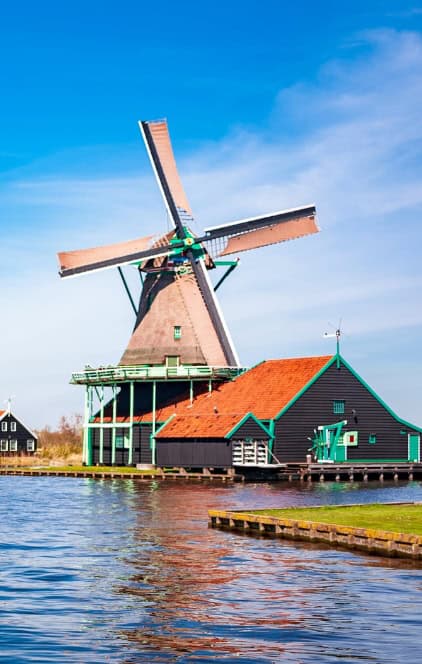
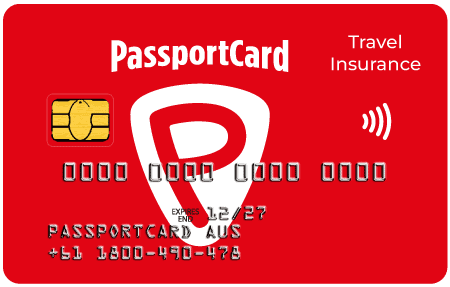
Instant payouts on approved claims with PassportCard
When you choose PassportCard, you’ll enjoy the extra peace of mind of knowing you’ll be able to cover most expenses there and then if something goes wrong.
When you purchase one of our travel insurance policies, we’ll ask you if you’d like a PassportCard to take with you on your trip. If something happens while you’re away (like your luggage is delayed, your cash is stolen or you experience a medical issue), our team can handle your claim quickly over the phone and transfer funds to your PassportCard on-the-spot**.
If approved, you’ll be able to withdraw cash to cover expenses that can arise from things like delayed luggage or stolen cash, or if it’s a medical issue, we can instantly add funds to your PassportCard so you can immediately pay for expenses when you need to.
You won’t need to fill out any paperwork and instant access to funds means you won’t be left out of pocket.
Find out more about how instant claims work or get a quote for your upcoming trip.


